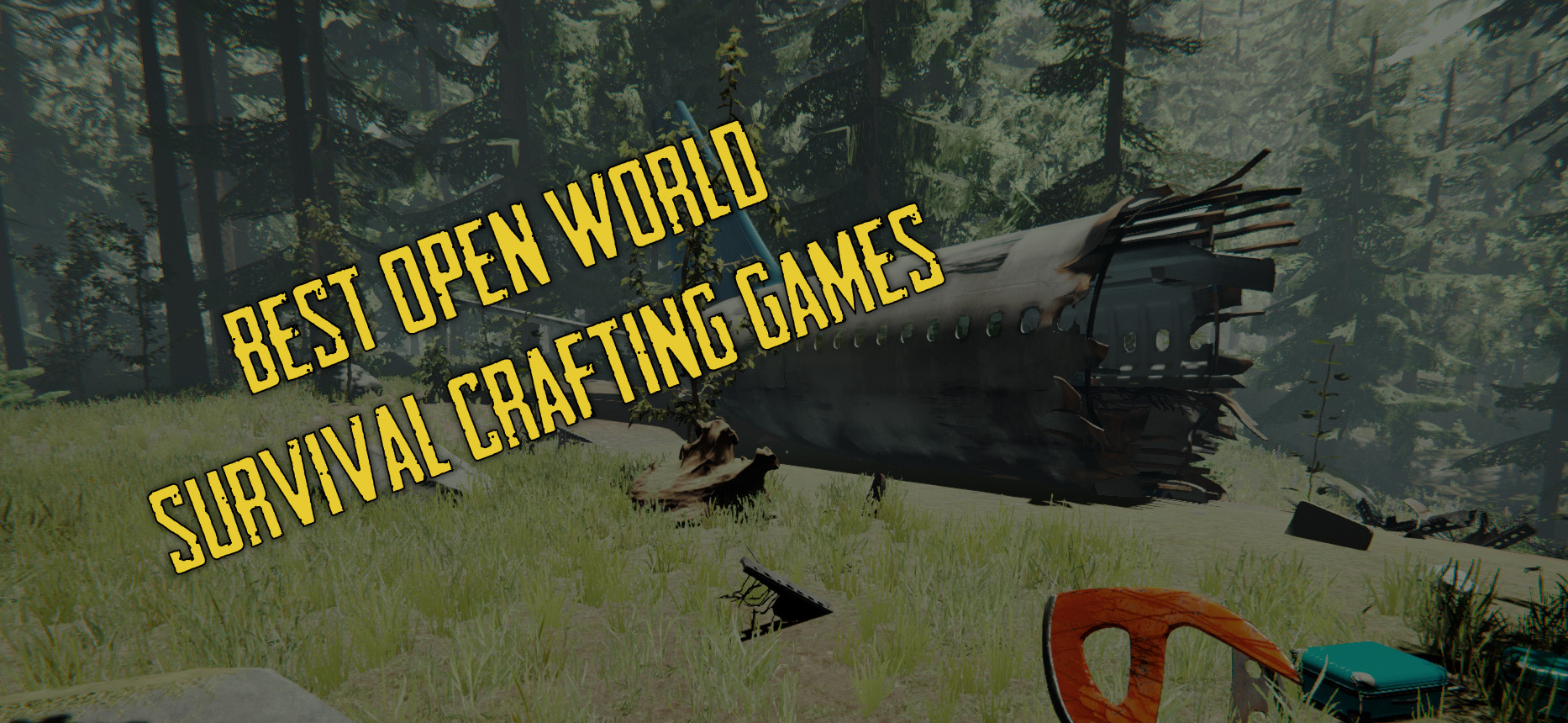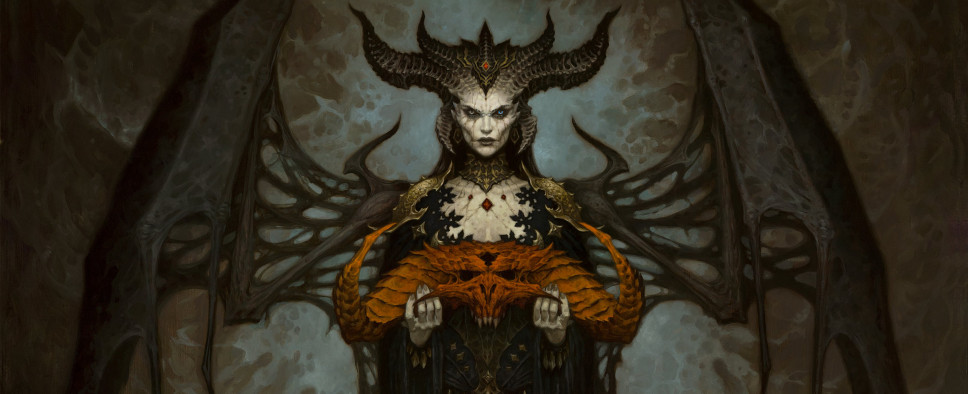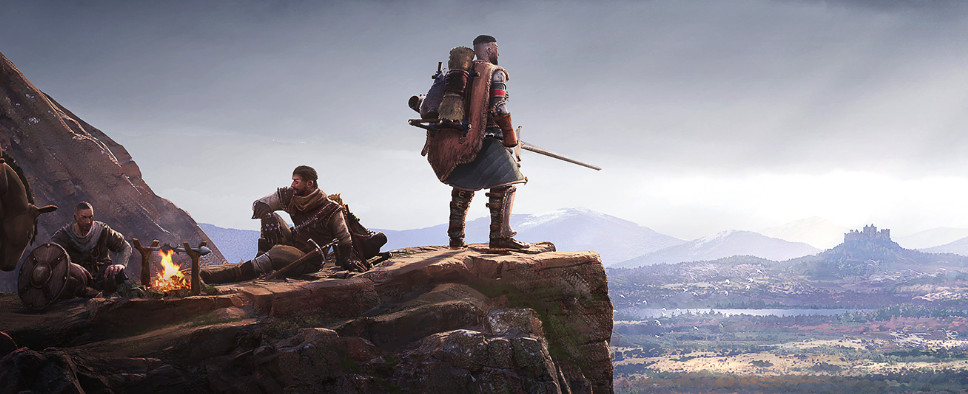Since we’ve last checked there are a few more articles dedicated to dissecting Guild Wars 2 after release, either in a review-in-progress or impressions form, and we’ve rounded them up here for your reading pleasure.
First GameRant has some impressions:
The much lauded quest system of the sequel is indeed more engaging and cooperative than the typical MMO laundry list that even the most recent entries in the genre have refused to break away from. Wandering into a dynamic event feels natural in a high fantasy world like Tyria, especially more so than providing services for a bunch of static NPCs with yellow punctuation marks flying over their heads.
That said, the action within the quests, whether they are within a player’s personal story or part of the tasks to complete the game’s Renown Hearts, is relatively standard MMORPG fare. You will gather items, you will kills monsters, you will save villagers, and you will continue to do these things until the progress bar fills up, rewarding you with gold, experience, and karma. This is not meant to be a criticism of the game, because completing these tasks is a lot of fun, especially when tackling screen-filling monsters with an army of other likeminded players.
The way Guild Wars 2 delivers its quests should be seen as more of a remix than a revolution, which is still much needed in a genre so stale that even attaching the Star Wars brand will not ensure success. ArenaNet obviously took a lot of care in balancing the new with the old, taking out aging elements of massively multiplayer games and replacing them with more modern mechanics and a fresh coat of paint.
GameSpy has added 2 more parts to their ongoing review in progress:
As you can probably tell, there’s enough story floating around in Guild Wars 2 to satisfy any lore hound, even if it’s only lightly touched on in the hearts and dynamic events that make up most of the gameplay. You get the most of it from your personal storylines, which you customize by answering vague questions at the character-creation screen. In my case, I chose the option that had me losing a prized warhorn owned by one of my ancestors, and many of the first levels revolved around following the legendary Norn Ranger Eir Stegalkin across the Shiverpeak Mountains after we learned that the warhorn was far more powerful than it originally seemed. In the beta, I played a human who’d always wanted to join the circus, and that storyline took me through a wild ride of bar fights and bandit tussles while I investigated some strange proceedings at the local circus.
All of this takes place amid a see-saw of cinematics and instanced action sequences that will be familiar to anyone who played Star Wars: The Old Republic. In Guild Wars 2’s favor, ArenaNet limits these cinematics to the story-based quests, and unfortunately they’re far less dependent on choice than those in SWTOR. Most of the time you’ll simply be watching the proceedings as you would a movie, although Guild Wars 2 suffers a bit in that the cinematics aren’t the rich, dramatic sequences you find in BioWare’s MMORPG. Without exception so far, cinematics consist of my character standing opposite the person she’s talking to with appropriate physical gestures acted out by both interlocutors, which would quickly grow boring if the story itself weren’t largely enjoyable. If you’re not the kind of person to sit through such fluff, though, you can always skip to the end, although you’ll undoubtedly be taken by surprise when a major choice does get thrown your way.
The good thing about the choices is that they almost always affect the gameplay of the instanced missions, such as when I had to choose between being transformed into a minotaur to slaughter some evil Norns or disguising myself and Eir as beer merchants to slip into their hideout undetected. Both choices ended in combat, although the style of its execution was considerably different. By the time I had to make my big decision to join either the Durmand Priory, The Order of Whispers, or the Vigil, I had enough experience with my own personal story to decide which faction’s playstyle best suited me, although there’s little indication up until the moment you actually have to choose that there’s even going to be a choice.
GameFront uses more or less the same format while calling it simply “review”:
While GW2 doesn’t include full voice acting, most important conversations in your personal storyline are voiced. This helps draw in the player, but the implementation feels dated and lazy. When one of these conversations begins, you’re transported to a cutscene window with an out-of-focus background and two characters standing in the foreground, one to the left, the other to the right. Only two characters can ever be on-screen at once, so if a third party is included in the conversation, either the left or right character is temporarily swapped out for the new speaker.
While this was also the case in the beta, an (under construction) notice led me to believe that this was a placeholder system while the team worked on the animations for actual cutscene sequences with different camera angles, character movement, and environmental interaction. Instead, we’re left with this awkward school play with characters standing in place before the audience, taking turns speaking. But I’ll still take these semi-cutscenes over a visit from the exposition fairy and her wall-of-text wand any day.
The effort that went into the personal storyline is appreciated, but thus far, it’s falling flat for me. I enjoy playing through the story quests, but the plot is failing to engage me. Perhaps things pick up later, but in storytelling, it’s especially important to hook your audience from the beginning, otherwise they may not stick around until things get interesting.
And so does The Controller Online:
Combat in Guild Wars 2 is fast paced, and can get quite chaotic when a lot of players get involved. You’ll still have a set of skills you can map to the number keys, like other MMO’s, but in this case you’ll unlock most of your weapon skills within a couple of hours. Skill are based on the weapon type you have equipped and more will open up as you use your weapon of choice. Movement is also important since both you, and your enemies, can dodge attacks. You’ll be able to run around, without cancelling the casting of any spells or skills and you can roll out of the way by double tapping the key that would move you in the direction you want to go. If you’re a melee fighter, you’ll have to get in close, and likewise, the enemies will have to be in range to attack you. Dying is also, a lot different as you’ll first go to (downed) when you lose all of your health. In this state you have a limited set of skills and you can revive yourself by killing an enemy or waiting for another player to revive you. If you do happen to actually die, you’ll just have to pay a very small fee to spawn at the nearest teleporter.
What really makes the combat fun, in my opinion, is the fact that it’s wide open for anyone who wants to participate. If you wander down a path and see another player fighting a monster, just join in. You’ll both get experience and, more importantly, both get loot. There won’t be any more running around competing for enemies with other players, just fight them together; no need to party up. What this system creates is huge, impromptu, dynamic battles often involving thirty or more players. If more players start showing up, Guild Wars 2 will just spawn more monsters and dynamically scale their difficulty.




